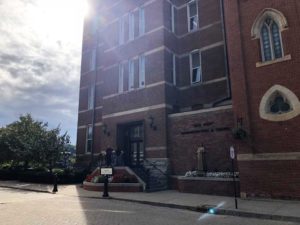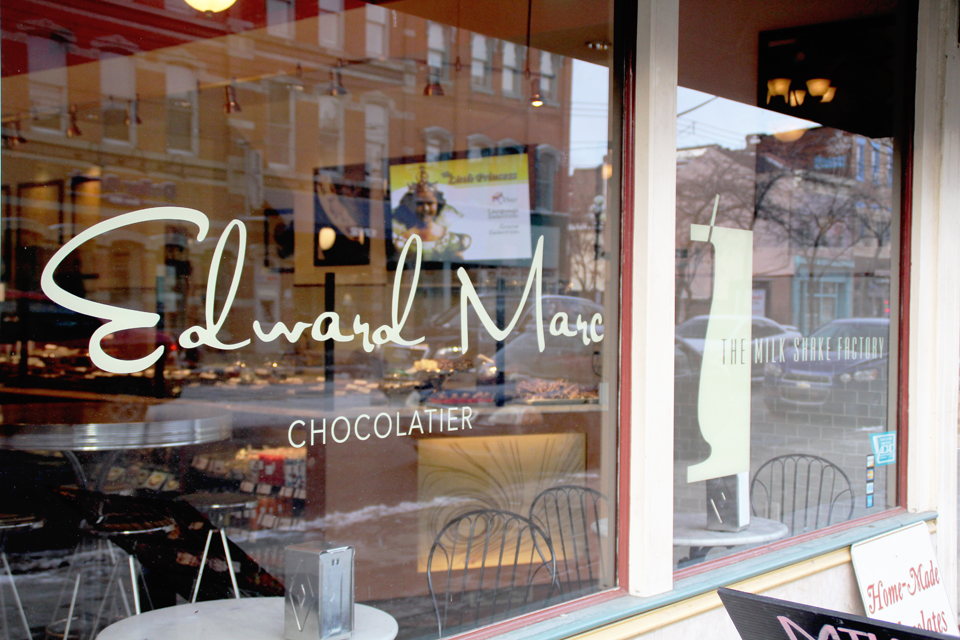
The Old Main building houses administrative offices like the president’s office. Public record information has shown that Duquesne has been investing significant money in several hedge funds based in the Cayman and British Virgin Islands.
Raymond Arke | Editor-in-Chief & Kailey Love | Managing Editor
10/18/2018
This is the third article in the Duke Deep Dives series.
The way in which private universities handle their finances is often scrutinized, as students voice their opinions and finance scholars examine university motivations. Duquesne is no exception.
Recently, studies have shown private colleges and universities often place significant money in offshore hedge fund accounts to avoid paying some federal taxes, as many non-profit organizations and corporations regularly do. Based on public record financial information, Duquesne engages in this practice as well, with offshore hedge fund accounts based in the British Virgin Islands and the Cayman Islands.
The information comes from the university’s Form 990, a set of documents from the IRS which is required to be publicly available and provides financial information on nonprofit organizations. Duquesne’s currently available Form 990 is from the fiscal year ending in June 2016. A request to Duquesne for the most recent Form 990 was not able to be fulfilled by press time.
According to the June 2016 Form 990, six of the hedge funds listed under the “Investments Other Securities” section are incorporated overseas. Rimrock High Income Plus, Fir Tree International Value Fund, HBK Offshore Fund, MKP Opportunity Offshore and Claren Road Credit Fund are all incorporated in the Cayman Islands, according to Securities and Exchange Commission filings.
The Form 990 lists that Duquesne had $12,636,062 invested in Rimrock, $8,008,926 invested with Fir Tree, $6,661,042 invested in HBK, $5,521,411 with MKP and $2,470,454 in Claren Road.
A sixth offshore account listed was Graham Global Investment Fund, which according to S&P Global Market Intelligence is incorporated in the British Virgin Islands. According to the Form 990, Duquesne had $4,414,525 invested in Graham.
Duquesne also has several million dollars invested in domestically-incorporated hedge funds.
This practice is often referred to as using “blocker corporations.” These efforts are defined by NASDAQ as the phenomenon that occurs when corporations “invest in private equity or hedge funds in order to avoid U.S. trade or business income taxes,” and are technically not illegal, but rather function as a loophole.
“The University [sic] invests in offshore accounts as a tax-savings strategy where the account is typically treated as a corporation for U.S. tax purposes,” Ken Walters, Duquesne media relations manager, said. “This, in effect, creates a protective layer between the investor (the University [sic]), and an investment fund’s underlying assets. The corporation then bears certain tax obligations instead of the investor, which limits the investor’s tax burden.”
University and college endowment earnings are commonly tax-exempt. However, the New York Times (NYT) reported in a Nov. 2017 article that universities have started moving money into less traditional and more lucrative hedge fund accounts that would open the potential earnings up to federal taxes.
“When schools earn income from enterprises unrelated to their core educational missions, they can be required to pay a tax that was intended to prevent nonprofits from competing unfairly with for-profit businesses,” the NYT reported. “Establishing another corporate layer between private equity funds and endowments effectively blocks any taxable income from flowing to the endowments, the reason they are called blocker corporations. The tax is instead owed by the corporations, which are established in no-tax or low-tax jurisdictions like the Cayman Islands or the British Virgin Islands.”
Walters explained that use of the loophole is not unusual and noted that there are several federal regulations which govern these types of accounts with which “Duquesne University must comply.” Other universities with offshore accounts, highlighted in the NYT article, include the University of Pittsburgh, Duke University, Colgate University and many Ivy League schools, among others.
“Working with its investment advisor, the University employs multiple investing strategies in order to maximize its return. This includes asset allocation and manager selection decisions as well as managing fees, taxes and other administrative costs,” Walters said. “It is common for universities to use this investment strategy and there are numerous regulations.”
Though it isn’t illegal, this practice has remained unpopular amongst legislators. In a letter to George Washington University in 2016, Chairman of the Senate Committee on Finance, Sen. Orrin Hatch (R-UT), Chairman of the House Committee on Ways and Means Rep. Kevin Brady (R-TX) and former Chairman of the House Ways and Means Oversight Subcommittee Rep. Peter Roskam (R-IL) asked thirteen questions pertaining to their use of offshore accounts, as well as criticized the practice.
“The National Association of College and University Business Officers reports that 56 private universities and colleges have endowments of more than $1 billion. This study showed endowments had an average return on investment of 15.5 percent and an average payout rate of 4.4 percent during the 2014 fiscal year,” they wrote. “Despite these large and growing endowments, many colleges and universities have raised tuition far in excess of inflation.”
Since 2013, Duquesne has increased tuition for liberal arts, education and nursing by approximately $8,276 and health sciences and pre-professional pharmacy by $9,246.
Duquesne joins universities across the U.S. in the widespread raise of tuition costs year by year. According to the National Center for Education Statistics, “between 2005–06 and 2015–16, prices for undergraduate tuition, fees, room and board at public institutions rose 34 percent, and prices at private nonprofit institutions rose 26 percent, after adjustment for inflation.”



